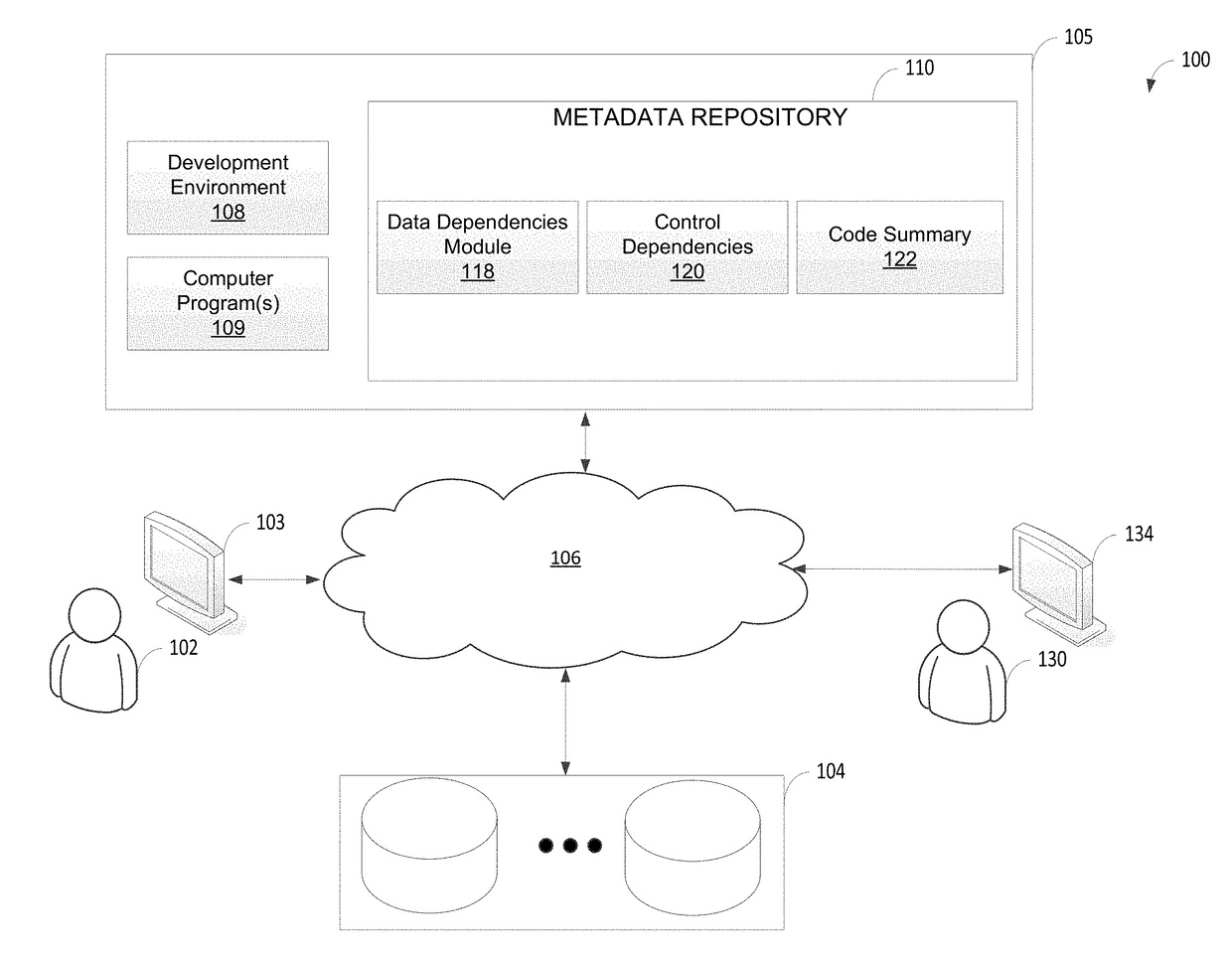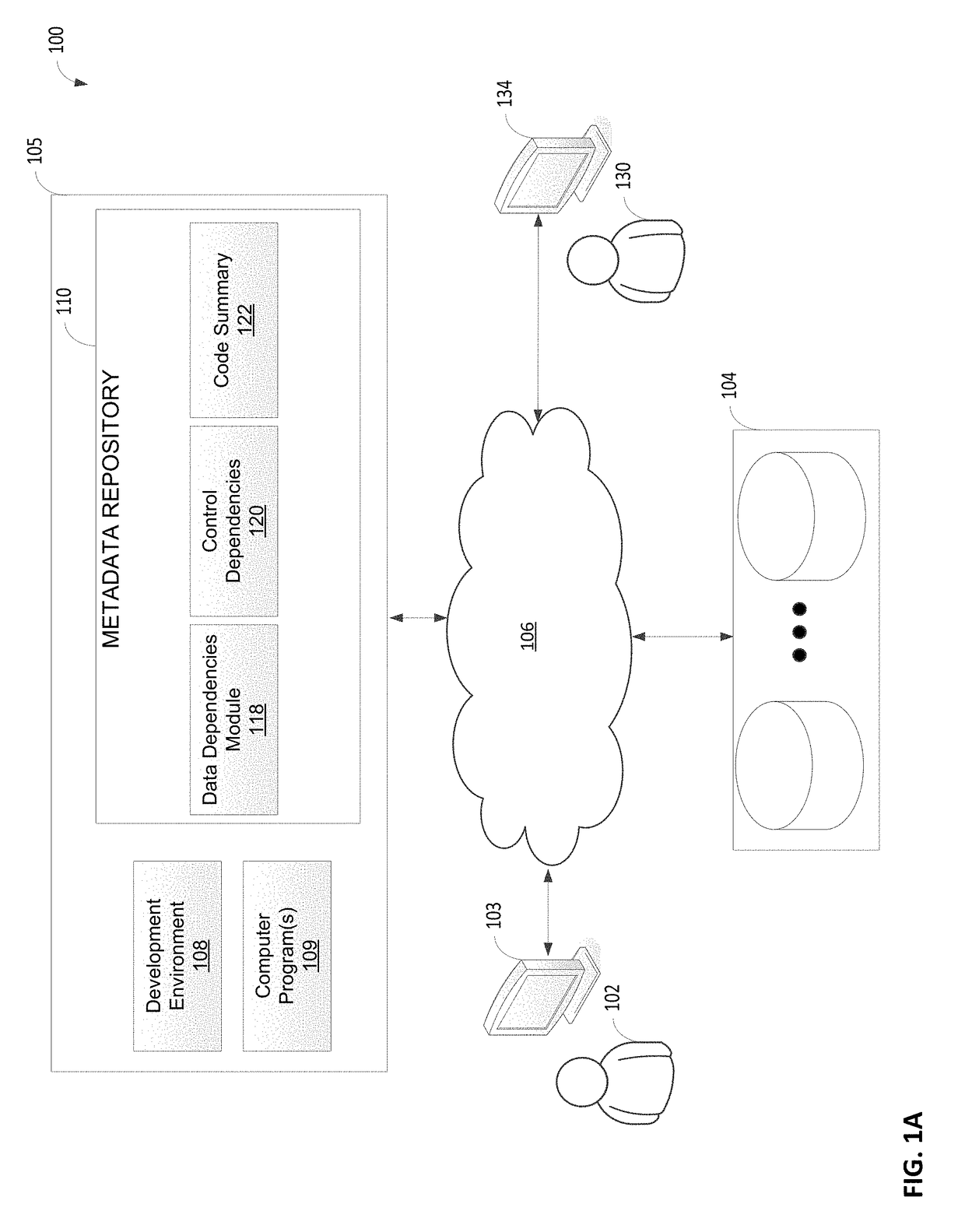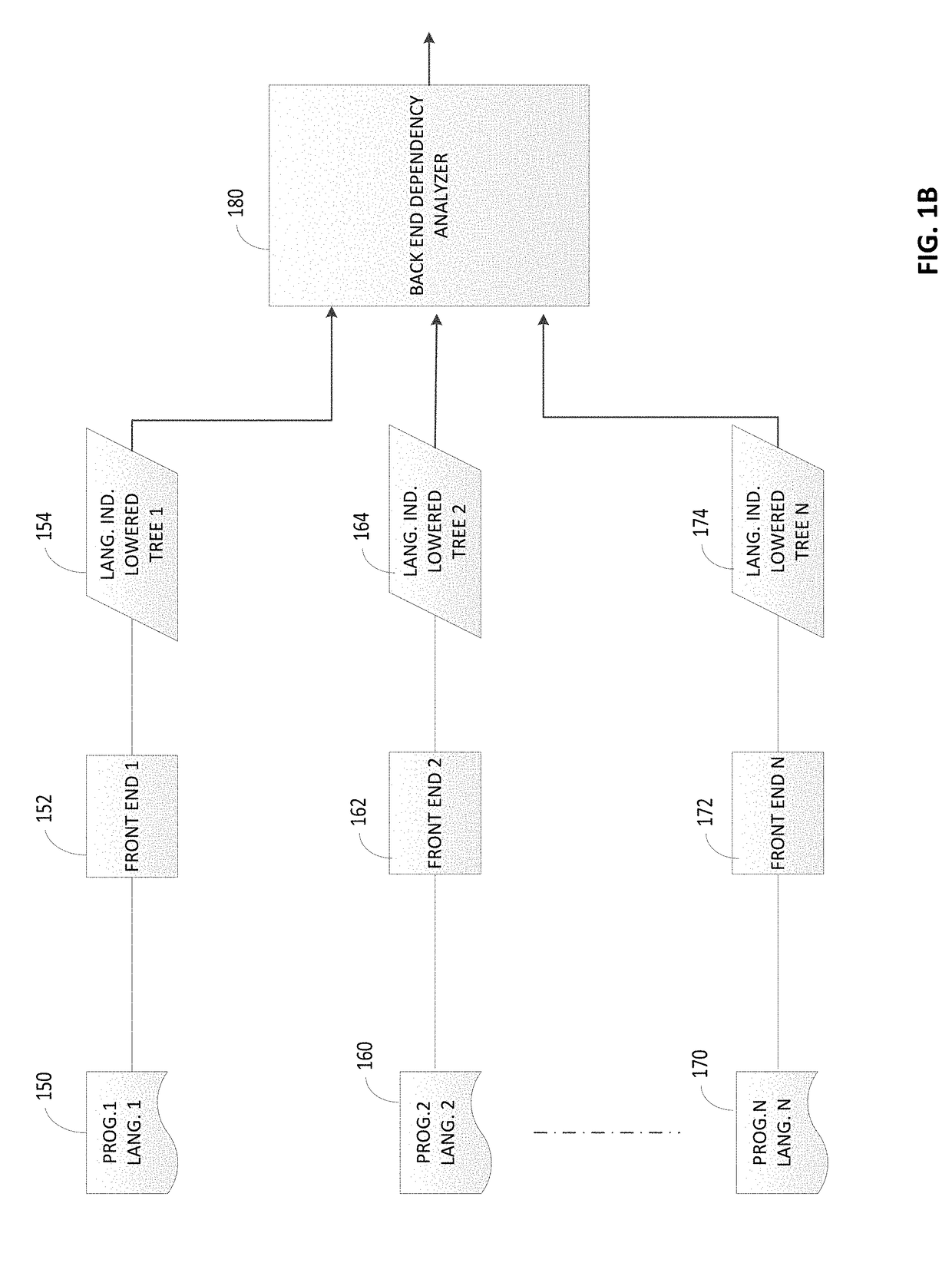Automated dependency analyzer for heterogeneously programmed data processing system
a data processing system and automatic technology, applied in the direction of electric digital data processing, instruments, computing, etc., can solve the problems of large amount of effort, insufficient dependency information for the entire data processing system, and flagged as suspicious
- Summary
- Abstract
- Description
- Claims
- Application Information
AI Technical Summary
Benefits of technology
Problems solved by technology
Method used
Image
Examples
example 1
, “Function”
[0080]In accordance with some embodiments, a portion of code that represents a function may appear as follows:
f( ) {}
[0081]This code, after being translated to a parse tree and processed, might be expressed as follows:
3:1 4:1 f1( ){}
[0082]Example 1 illustrates a simple function being expressed as a procedure definition. From a dependency point of view, a procedure has scopes, input, output, or bidirectional parameters. A function is a procedure with a return parameter.
[0083]“3:1 4:1” is the start and end location in the source file for the generated construct. This information may serve as a pointer to code that generated the dependency, which may be used to generate code summaries that may be stored in the metadata repository 110. Alternatively or additionally, an extraction module may capture information about the source code that gave rise to a dependency by copying lines of code. In accordance with some embodiments, an extraction module may be programmed to indicate,...
example 2
t
[0084]As a second example, the following dependency affecting operation might appear in source code.
f( x in, y out) {y = x;}
[0085]Through frontend processing, that operation might be expressed as a dependency construct as follows:
21:1 23:1 f2( x, y OUT) {22:5 22:11 y [ x ]}
[0086]In this, and the other examples, square brackets are used for dependency lists and parentheses are used for parameter and argument lists. Curly brackets are used for scope. For example, “y [x],” indicates a single dependency, with “y” being dependent on “x”. In the language constituting the set of dependency constructs provided as an example herein, a dependency always has a single target element, “y” in this case, and a source element list. In this example, the source element list is “[x],” and consists of one element, “x.” Pointers to source code for the purpose of generating source code summaries at later phases of processing are also illustrated in this example. Here, a relevant portion of sour code is ...
example 3
[0090]A function that returns a value for a variable may also create a dependency, because the value of the returned variable may depend on processing within the function, including variables used in the processing of that function. A function
f(x) {return x}
[0091]might be expressed by a dependency construct as follows:
f3( x ) {_RETURN [ x ]}
[0092]“_RETURN” is a special data element name used to designate the unnamed entity that is returned by the function. This example illustrates that data elements, other than expressly declared variables, may have or create dependencies. In the processing described herein, data elements, regardless of how created, may be processed. “_RETURN” is an example of a local data element—it has meaning only within the program. However, even a local data element may be used in an assignment to a “global variable,” may control execution of portions of the program, or may be used in some other way that creates a data flow or control flow dependency. If the va...
PUM
 Login to View More
Login to View More Abstract
Description
Claims
Application Information
 Login to View More
Login to View More - R&D
- Intellectual Property
- Life Sciences
- Materials
- Tech Scout
- Unparalleled Data Quality
- Higher Quality Content
- 60% Fewer Hallucinations
Browse by: Latest US Patents, China's latest patents, Technical Efficacy Thesaurus, Application Domain, Technology Topic, Popular Technical Reports.
© 2025 PatSnap. All rights reserved.Legal|Privacy policy|Modern Slavery Act Transparency Statement|Sitemap|About US| Contact US: help@patsnap.com



